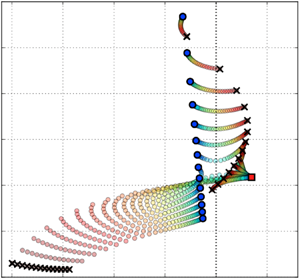Article contents
An exceptional point switches stability of a thermoacoustic experiment
Published online by Cambridge University Press: 11 June 2021
Abstract

We identify an exceptional point in the numerical stability map of a combustion experiment operated with laminar premixed flames. A low-order model of the experiment allows one to investigate the interplay between the system modes and an exceptional point. The latter is located in the unstable region of the complex eigenvalue plane. Under gradual variation of the operating parameters, the branch-switching characteristic of the exceptional point can facilitate abrupt changes between strong instability and stable operation. The results also indicate that intrinsic thermoacoustic feedback plays an important role in the stability characteristics of this experiment.
JFM classification
- Type
- JFM Rapids
- Information
- Copyright
- © The Author(s), 2021. Published by Cambridge University Press
References
REFERENCES
- 4
- Cited by





